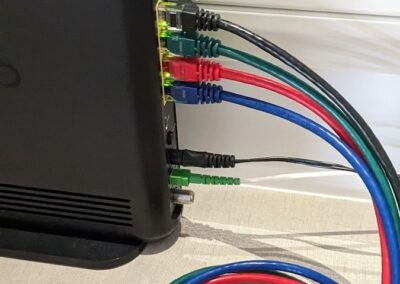The Stuxnet Worm: Exploiting Industrial IoT Vulnerabilities
Understanding the Stuxnet Attack
In the realm of industrial IoT security, the Stuxnet worm stands as a stark reminder of the vulnerabilities inherent in interconnected systems. First discovered in 2010, Stuxnet specifically targeted industrial control systems (ICS), exploiting zero-day vulnerabilities to gain access and manipulate critical infrastructure. This sophisticated malware was designed to disrupt the operations of centrifuges used in Iran’s nuclear facilities, highlighting the potential for cyber-attacks to have significant geopolitical and economic consequences. For business executives and mid-level managers in Saudi Arabia and the UAE, understanding the mechanics of the Stuxnet worm is crucial for developing robust cybersecurity strategies to protect industrial IoT systems.
Identifying Key Vulnerabilities Exploited by Stuxnet
The Stuxnet worm exploited several vulnerabilities within industrial IoT systems, particularly focusing on the lack of adequate security measures in place. These vulnerabilities included default passwords, unpatched software, and unsecured network protocols. Stuxnet was able to infiltrate systems through infected USB drives, exploiting Windows-based vulnerabilities to spread across networks and access programmable logic controllers (PLCs). For organizations in Riyadh and Dubai, recognizing these vulnerabilities is essential for fortifying their IoT systems against similar threats. Implementing stringent security protocols and ensuring regular software updates can significantly reduce the risk of such breaches.
The Impact of Stuxnet on Industrial IoT Security
The Stuxnet attack had far-reaching implications for industrial IoT security, prompting a global reevaluation of cybersecurity practices within critical infrastructure. The attack underscored the necessity of a comprehensive approach to IoT security, integrating both technological and procedural measures to safeguard systems. For business leaders and entrepreneurs in the UAE and Saudi Arabia, the lessons learned from Stuxnet are invaluable. It highlighted the need for proactive measures to identify and mitigate vulnerabilities, emphasizing the importance of continuous monitoring, regular updates, and robust access controls to protect against sophisticated cyber threats.
Implementing Security Measures to Mitigate IoT Vulnerabilities
Adopting a Zero-Trust Security Model
One of the most effective strategies to mitigate vulnerabilities in industrial IoT systems is the adoption of a zero-trust security model. This approach operates on the principle of “never trust, always verify,” ensuring that every access request is authenticated and authorized before granting entry. For enterprises in Riyadh and Dubai, implementing a zero-trust model involves segmenting networks, enforcing strict access controls, and continuously monitoring for suspicious activities. This proactive stance significantly reduces the attack surface and enhances the overall security posture of IoT systems, making it harder for malicious actors to exploit vulnerabilities.
Regular Firmware Updates and Patch Management
Ensuring that all IoT devices and systems are regularly updated with the latest firmware and security patches is crucial for maintaining a secure environment. The Stuxnet worm exploited unpatched vulnerabilities, highlighting the importance of timely updates. For organizations in Saudi Arabia and the UAE, adopting automated patch management solutions can streamline this process, ensuring that all devices are consistently up-to-date and protected against known threats. Additionally, maintaining an inventory of all IoT devices and their respective firmware versions can help in quickly identifying and addressing any outdated or vulnerable systems.
Enhancing Network Security with Segmentation and Monitoring
Network segmentation and continuous monitoring are essential components of a robust IoT security strategy. By segmenting networks, organizations can isolate critical systems from less secure areas, limiting the potential spread of malware. Continuous monitoring, on the other hand, enables the detection of anomalies and potential threats in real-time. For business executives and mid-level managers in Dubai and Riyadh, investing in advanced monitoring solutions, such as intrusion detection systems (IDS) and security information and event management (SIEM) platforms, can provide valuable insights into network activities and help in promptly responding to security incidents.
Conclusion: Strengthening Industrial IoT Security Post-Stuxnet
In conclusion, the Stuxnet worm serves as a powerful reminder of the vulnerabilities present in industrial IoT systems and the critical need for comprehensive security measures. By adopting a zero-trust security model, ensuring regular firmware updates, and enhancing network segmentation and monitoring, organizations can significantly reduce the risk of similar attacks. For business leaders in Saudi Arabia, the UAE, Riyadh, and Dubai, these proactive steps are essential for protecting critical infrastructure and maintaining the integrity of their IoT networks. As the threat landscape continues to evolve, staying ahead of potential vulnerabilities through continuous improvement and vigilance will be key to ensuring the security and resilience of industrial IoT systems.
—
#StuxnetWorm #IoTSecurity #Cybersecurity #SaudiArabia #UAE #Riyadh #Dubai #ArtificialIntelligence #Blockchain #GenerativeAI #BusinessSuccess #LeadershipSkills #ProjectManagement































